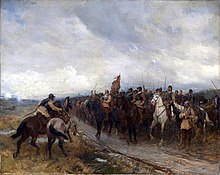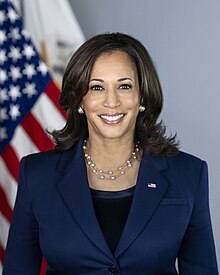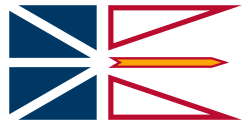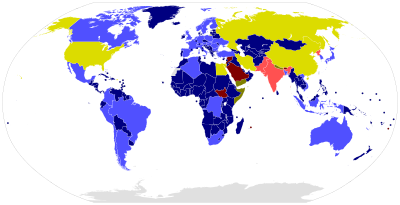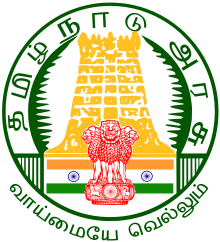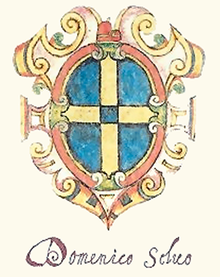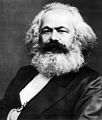
Back Portal:Politik ALS بوابة:السياسة Arabic بوابة:سياسة ARZ Портал:Политика Bulgarian প্রবেশদ্বার:রাজনীতি Bengali/Bangla Portal:Politika BS دەروازە:سیاسەت CKB Portál:Politika Czech Portal:Politik German Portal:Siyaset DIQ
| Main | Topics and categories | Tasks and projects |
The Politics portal
Politics (from Ancient Greek πολιτικά (politiká) 'affairs of the cities') is the set of activities that are associated with making decisions in groups, or other forms of power relations among individuals, such as the distribution of resources or status. The branch of social science that studies politics and government is referred to as political science.
It may be used positively in the context of a "political solution" which is compromising and non-violent, or descriptively as "the art or science of government", but also often carries a negative connotation. The concept has been defined in various ways, and different approaches have fundamentally differing views on whether it should be used extensively or in a limited way, empirically or normatively, and on whether conflict or co-operation is more essential to it.
A variety of methods are deployed in politics, which include promoting one's own political views among people, negotiation with other political subjects, making laws, and exercising internal and external force, including warfare against adversaries. Politics is exercised on a wide range of social levels, from clans and tribes of traditional societies, through modern local governments, companies and institutions up to sovereign states, to the international level.
In modern nation states, people often form political parties to represent their ideas. Members of a party often agree to take the same position on many issues and agree to support the same changes to law and the same leaders. An election is usually a competition between different parties.
A political system is a framework which defines acceptable political methods within a society. The history of political thought can be traced back to early antiquity, with seminal works such as Plato's Republic, Aristotle's Politics, Confucius's political manuscripts and Chanakya's Arthashastra. (Full article...)
Selected article
The Anglo-Scottish war (1650–1652), also known as the Third Civil War, was the final conflict in the Wars of the Three Kingdoms, a series of armed conflicts and political machinations between shifting alliances of religious and political factions in England, Scotland and Ireland.
Featured picture
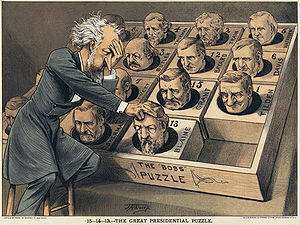
An 1880 political cartoon depicts Senator Roscoe Conkling over a "presidential puzzle" consisting of some of the potential Republican nominees as pieces of a newly invented sliding puzzle. Conkling held significant influence over the party during the 1880 Republican National Convention and attempted to use that to nominate Ulysses S. Grant, only to lose out to "dark horse" candidate James A. Garfield.
The Chief Minister of Tamil Nadu is the chief executive of the Indian state of Tamil Nadu. In accordance with the Constitution of India, the governor is a state's de jure head, but de facto executive authority rests with the chief minister. Following elections to the Tamil Nadu Legislative Assembly, the state's governor usually invites the party (or coalition) with a majority of seats to form the government. The governor appoints the chief minister, whose council of ministers are collectively responsible to the assembly. Given that he has the confidence of the assembly, the chief minister's term is for five years and is subject to no term limits.
Since 1950, Tamil Nadu has had 12 chief ministers, 13 including V. R. Nedunchezhiyan, who twice acted in the role. The longest-serving chief minister, M. Karunanidhi from Dravida Munnetra Kazhagam held the office for over eighteen years in multiple tenures, while he was the one who had the largest gap between two terms (nearly thirteen years). The All India Anna Dravida Munnetra Kazhagam's former general secretary J. Jayalalithaa has the second-longest tenure, and its founder M. G. Ramachandran, the first actor to become the chief minister in India has the third-longest tenure, while his wife V. N. Janaki Ramachandran has the shortest tenure (only 23 days). K. Kamaraj resigned his post of his own free will and devoted all of his energy to the revitalization of the Indian National Congress party; he was responsible for the elevation of Lal Bahadur Shastri to the position of Prime Minister of the Republic of India following the death of Jawaharlal Nehru and of Indira Gandhi following the death of Lal Bahadur Shastri. C. Rajagopalachari served as the last Governor-General of the Union of India before becoming chief minister of undivided Madras State. There have been four instances of president's rule in Tamil Nadu, most recently in 1991. (Full article...)

The chancellor of Germany is the political leader of Germany and the head of the federal government. The office holder is responsible for selecting all other members of the government and chairing cabinet meetings.
The office was created in the North German Confederation in 1867, when Otto von Bismarck became the first chancellor. With the unification of Germany and establishment of the German Empire in 1871, the Confederation evolved into a German nation-state and its leader became known as the chancellor of Germany. Originally, the chancellor was only responsible to the emperor. This changed with the constitutional reform in 1918, when the Parliament was given the right to dismiss the chancellor. Under the 1919 Weimar Constitution the chancellors were appointed by the directly elected president, but were responsible to Parliament. (Full article...)
The longest-serving current first minister is Prime Minister Justin Trudeau, who assumed office on November 4, 2015; the newest first minister is R.J. Simpson of the Northwest Territories, who assumed office on December 8, 2023. The oldest first minister, Blaine Higgs of New Brunswick, is 70; the youngest first minister, P.J. Akeeagok of Nunavut, is 39. Of the current first ministers, one (Danielle Smith of Alberta) is a woman and three (P.J. Akeeagok of Nunavut, Wab Kinew of Manitoba, and R.J. Simpson of the Northwest Territories) are Indigenous. (Full article...)
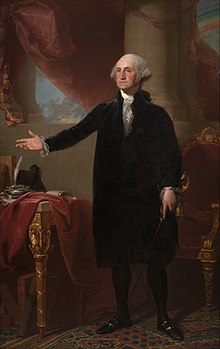
United States President George Washington appointed 39 Article III United States federal judges during his presidency, which lasted from April 30, 1789 to March 4, 1797. The first group of Washington's appointments—two justices of the Supreme Court of the United States and ten district court judges—began service two days after Congress passed the Judiciary Act of 1789, which formally established the federal judiciary. Washington's last court appointee received his commission twelve days before the end of Washington's presidency.
As the first president, Washington was responsible for appointing the entire Supreme Court; he appointed a record eleven justices, including two Chief Justices and who were confirmed from outside the Court and one former Justice named as Chief Justice by a recess appointment, but not ultimately confirmed to the position. Additionally, Washington nominated Robert H. Harrison, who declined to serve, and nominated William Cushing for elevation to Chief Justice, who likewise declined. (Full article...)
- Lower Canada held 15 elections for its Legislative Assembly, from 1792 to 1835;
- Upper Canada held 13 elections to its Legislative Assembly, from 1792 to 1836;
- the Province of Canada held 8 elections for its Legislative Assembly from 1841 to 1863;
- New Brunswick's first 21 elections, beginning in 1785 (the 21st Legislative Assembly of New Brunswick was elected in 1866, one year before Confederation, and continued until 1870, three years after Confederation);
- Nova Scotia's first 22 elections, beginning in 1758;
- Prince Edward Island's first 25 elections, beginning in 1773; and
- Newfoundland's first 29 elections, beginning in 1832.
The most recent election is shown with a box limited to five years of government, as this is the maximum length of office, as set by the constitution. However, elections can be called at any time by an incumbent government. The federal government, nine provinces, and one territory have changed to fixed election dates every four years. For these legislatures, the box is shown as running until the next scheduled election, but one could still be earlier if the government falls due to a motion of no confidence. Nova Scotia and Yukon do not have fixed election dates in this matter. (Full article...)
Alberta uses a unicameral Westminster-style parliamentary government, in which the premier is the leader of the party that controls the most seats in the Legislative Assembly. The premier is Alberta's head of government, while the king of Canada is its head of state and is represented by the lieutenant governor of Alberta. The premier picks a cabinet, usually from the elected members of the Legislative Assembly, to form the Executive Council of Alberta, and presides over that body. (Full article...)
The General Secretary of the Central Committee of the Communist Party of the Soviet Union was the leader of the Communist Party of the Soviet Union (CPSU). From 1924 until the country's dissolution in 1991, the officeholder was the recognized leader of the Soviet Union. Prior to Stalin's accession, the position was not viewed as an important role in Lenin's government and previous occupants had been responsible for technical rather than political decisions.
Officially, the General Secretary solely controlled the Communist Party directly. However, since the party had a monopoly on political power, the General Secretary de facto had executive control of the Soviet government. Because of the office's ability to direct both the foreign and domestic policies of the state and preeminence over the Soviet Communist Party, it was the de facto highest office of the Soviet Union. (Full article...)
The governor of Delaware (known as the president of Delaware from 1776 to 1792) is the head of government of Delaware and the commander-in-chief of the state's military forces. The governor has a duty to enforce state laws, and the power to either approve or veto bills passed by the Delaware Legislature, to convene the legislature, and to grant pardons, except in cases of impeachment, and only with the recommendation of the Board of Pardons.
There have been 71 people who have served as governor, over 74 distinct terms. Three (Joseph Haslet, Charles Polk Jr. and Elbert N. Carvel) served non-consecutive terms. Additionally, Henry Molleston was elected, but died before he could take office. Only four governors have been elected to two consecutive terms, with the longest-serving being Ruth Ann Minner, who was elected twice after succeeding to the office, serving a total of just over eight years. The shortest term is that of Dale E. Wolf, who served 18 days following his predecessor's resignation; David P. Buckson served 19 days under similar circumstances. The current governor is Democrat John Carney, who took office on January 17, 2017. (Full article...)
Selected quote
Selected biography
Domenico Selvo (died 1087) was the 31st Doge of Venice, serving from 1071 to 1084. During his reign as Doge, his domestic policies, the alliances that he forged, and the battles that the Venetian military won and lost laid the foundations for much of the subsequent foreign and domestic policy of the Republic of Venice. He avoided confrontations with the Byzantine Empire, the Holy Roman Empire, and the Roman Catholic Church at a time in European history when conflict threatened to upset the balance of power. At the same time, he forged new agreements with the major nations that would set up a long period of prosperity for the Republic of Venice. Through his military alliance with the Byzantine Empire, Emperor Alexios I Komnenos awarded Venice economic favors with the declaration of a golden bull that would allow for the development of the republic's international trade over the next few centuries.
Did you know (auto-generated) -

- ... that Prawoto Mangkusasmito did not complete law school before the Japanese invaded because he was too busy with student and political organizations?
- ... that before becoming the mayor of Medan, Indonesia, Agus Salim Rangkuti acted in movies and oversaw a real-life political prison camp?
- ... that although he was a former Indonesian prime minister, Soekiman Wirjosandjojo was not arrested during a political purge as he was considered a non-threat?
- ... that reporter O. Kay Henderson, who has interviewed U.S. presidential candidates, is considered by national media to be an Iowa political authority?
- ... that prior to entering politics, Herbert Salvatierra led a troupe of carnival comparsas?
- ... that American football wide receiver Bo Hines transferred to Yale University as a freshman to further his political ambitions?
More did you know...
- ...that the traditional form of government in Tibet from 1642 to 1951 was the Cho-sid-nyi?
- ...that the 1968 pamphlet Is the School House the Proper Place to Teach Raw Sex? claimed that sex education was a Communist conspiracy?
- ...that the American Society of Magazine Editors book The Best American Magazine Writing 2007 features investigative journalism about the Beslan school hostage crisis and survivors of Agent Orange?
- ...that the Libyan opposition has embraced "Zenga Zenga", an Israeli-created auto-tuned song and viral YouTube video that parodies Libyan ruler Muammar Gaddafi (pictured)?
- ...that Nunez Community College in Chalmette, Louisiana, is named for the late wife of former Louisiana State Senate President Samuel B. Nunez, Jr.?
- ...that Roman embassies to China are reported in Chinese historical accounts from as early as 166?
In this month
- May 5, 2005 – A General Election in the United Kingdom sees Tony Blair's Labour government returned to office with a reduced majority of 66.
- May 14, 1948 – The Declaration of Independence of Israel is made.
- May 18, 1948 – The first Legislative Yuan of the Republic of China officially convenes in Nanking.
News and Current events
- August 11: 4 local government areas in New South Wales, Australia locked down after COVID-19 case
- August 11: Australia: AstraZeneca vaccine access expanded by Victorian government
- August 1: Australia: Victorian lockdown lifted
- July 29: Tunisia's president dismisses prime minister, suspends parliament
- July 25: Australia: Wikinews interviews Reg Kidd, mayor of the City of Orange, about COVID-19 lockdown and local government
- July 23: South Australia enters week-long lockdown to contain COVID-19 Delta variant spread
- July 21: Technological University Dublin senior lecturer Dr Lorcan Sirr speaks to Wikinews on housing market in Ireland
- July 21: Three rural councils in New South Wales, Australia enter 7-day lockdown
- July 21: Australia: Victoria lockdown extended by a week with 85 active cases recorded
- July 15: California governor signs new state budget, eligible Californians to get stimulus payments
Topics and categories
General images
Related portals
Associated Wikimedia
The following Wikimedia Foundation sister projects provide more on this subject:
-
Commons
Free media repository -
Wikibooks
Free textbooks and manuals -
Wikidata
Free knowledge base -
Wikinews
Free-content news -
Wikiquote
Collection of quotations -
Wikisource
Free-content library -
Wikiversity
Free learning tools -
Wiktionary
Dictionary and thesaurus
Sources
More portals
© MMXXIII Rich X Search. We shall prevail. All rights reserved. Rich X Search
